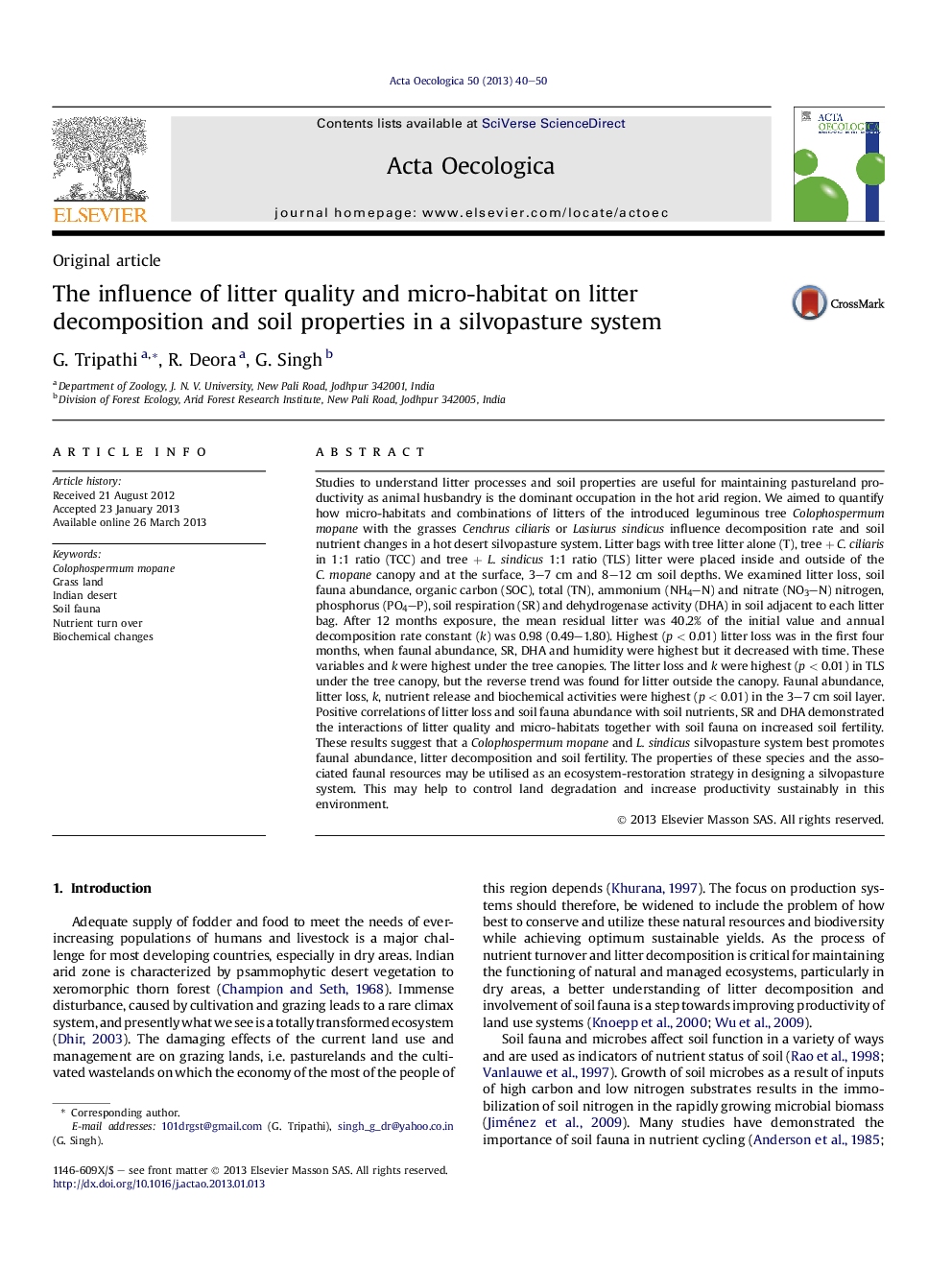| Article ID | Journal | Published Year | Pages | File Type |
|---|---|---|---|---|
| 4380830 | Acta Oecologica | 2013 | 11 Pages |
Studies to understand litter processes and soil properties are useful for maintaining pastureland productivity as animal husbandry is the dominant occupation in the hot arid region. We aimed to quantify how micro-habitats and combinations of litters of the introduced leguminous tree Colophospermum mopane with the grasses Cenchrus ciliaris or Lasiurus sindicus influence decomposition rate and soil nutrient changes in a hot desert silvopasture system. Litter bags with tree litter alone (T), tree + C. ciliaris in 1:1 ratio (TCC) and tree + L. sindicus 1:1 ratio (TLS) litter were placed inside and outside of the C. mopane canopy and at the surface, 3–7 cm and 8–12 cm soil depths. We examined litter loss, soil fauna abundance, organic carbon (SOC), total (TN), ammonium (NH4–N) and nitrate (NO3–N) nitrogen, phosphorus (PO4–P), soil respiration (SR) and dehydrogenase activity (DHA) in soil adjacent to each litter bag. After 12 months exposure, the mean residual litter was 40.2% of the initial value and annual decomposition rate constant (k) was 0.98 (0.49–1.80). Highest (p < 0.01) litter loss was in the first four months, when faunal abundance, SR, DHA and humidity were highest but it decreased with time. These variables and k were highest under the tree canopies. The litter loss and k were highest (p < 0.01) in TLS under the tree canopy, but the reverse trend was found for litter outside the canopy. Faunal abundance, litter loss, k, nutrient release and biochemical activities were highest (p < 0.01) in the 3–7 cm soil layer. Positive correlations of litter loss and soil fauna abundance with soil nutrients, SR and DHA demonstrated the interactions of litter quality and micro-habitats together with soil fauna on increased soil fertility. These results suggest that a Colophospermum mopane and L. sindicus silvopasture system best promotes faunal abundance, litter decomposition and soil fertility. The properties of these species and the associated faunal resources may be utilised as an ecosystem-restoration strategy in designing a silvopasture system. This may help to control land degradation and increase productivity sustainably in this environment.
► Under the influence of litter quality, micro-habitats and soil fauna residual litter quantity was 40.2% of the initial value. ► Annual decomposition rate constant (k) ranged from 0.49 to 1.80 per year, and highest litter loss was in first four months. ► Highest litter loss and k value were in TLS under tree canopy enhancing nutrient release and biological activity. ► Faunal population, litter loss, k, nutrient release and biochemical activities were highest in 3–7 cm soil layer. ► Litter quality and micro-habitats together with soil fauna influenced soil fertility and biological activity positively.
